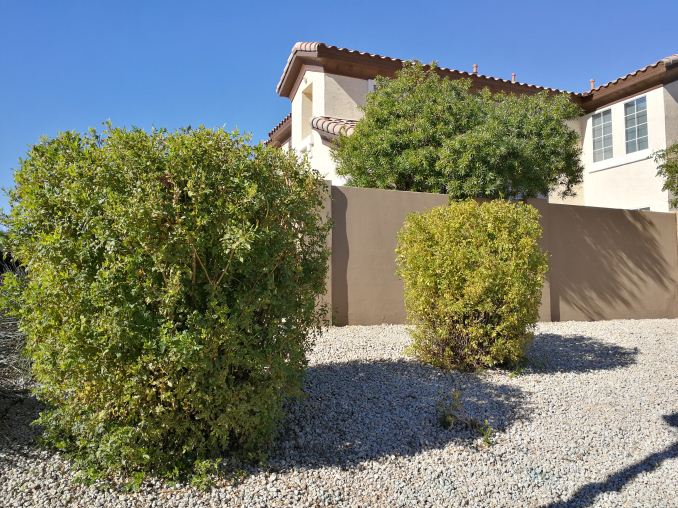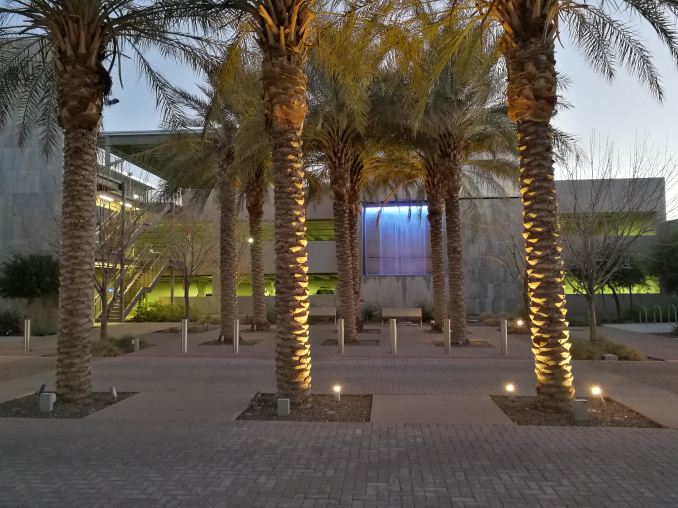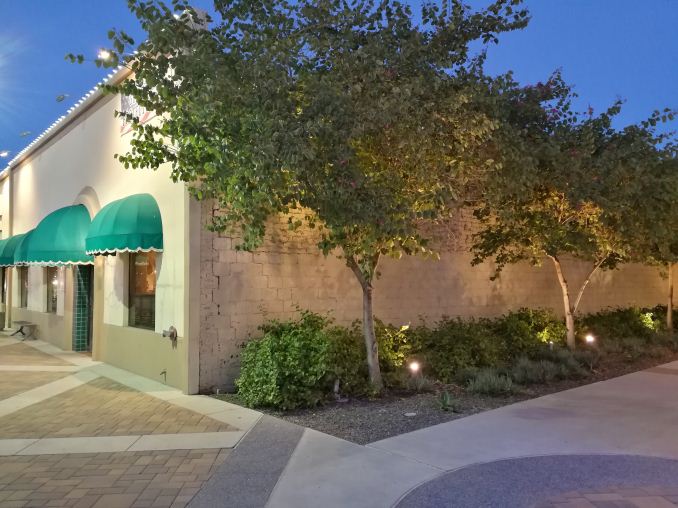The Huawei Mate 9 Review
by Matt Humrick on January 27, 2017 7:00 AM ESTCamera Still Image Quality
Before we examine photo quality in detail, let’s take a quick look at the Mate 9’s Leica inspired camera modes. There’s three of them—Standard, Vivid, and Smooth—and they try to replicate similar effects in Leica’s own cameras through post-processing routines. Standard mode, which favors accuracy over artistic effect, is the default. Vivid is self explanatory; it boosts saturation, making colors pop. This mode works quite well when colors are naturally muted, such as cloudy days and at dusk when there’s less light. The Smooth mode also increases color saturation but only a little. In some scenes it also appears to adjust gamma, reducing shadow detail and darkening the image, and apply a vignette filter that gives the photos a more vintage feel. In each case, the viewfinder provides a live preview.
| Huawei Mate 9: Leica Camera Modes |
As usual, I took several pictures with the Mate 9 for the purpose of evaluating image quality, and I captured the same scenes with several other phones for comparison. I’ve included Huawei’s Mate 8 (16MP, f/2.0, OIS) to see if the Mate 9’s new dual camera offers any generational improvement, along with Samsung’s Galaxy S7 edge (12MP, f/1.7, OIS) and Google’s Pixel XL (12.3MP, f/2.0), which are two of the best phone cameras currently available. I also threw in the Motorola Moto Z Play Droid (16MP, f/2.0) as a cheaper alternative.
All of the photos were taken with the stock camera app set to Auto mode. Each phone’s HDR or auto HDR (HDR+ mode for Pixel XL) mode was turned on, and the Mate 9 used its Standard Leica mode. All of these phones capture images natively with a 4:3 aspect ratio.
Unfortunately, the Mate 9’s rear camera is limited to only 12MP when using its HDR mode, which I did not discover until after I finished shooting all of the pictures. So all of the Mate 9’s images below have a 12MP resolution, negating its resolution advantage, even though I had selected the 20MP setting.
| Daylight Photo Comparison 1 |
In this first scene, the bright sun was shining on the front of the light-colored house. The Mate 9’s image shows the best exposure, accurately capturing the brightness of the scene without completely overexposing the highlights on the front of the house like the Galaxy S7 edge. The Pixel XL’s HDR+ mode does an excellent job eliminating this highlight, but its white balance skews a little too warm and its colors are oversaturated, appearing almost as vibrant as the Moto Z Play. The S7 edge’s colors are also oversaturated, its white balance is too cool, and its edge sharpening filter is too aggressive, creating weird halos on the rocks.
The Mate 9 actually captures the most accurate colors in this scene. Its white balance is almost perfect, and the sky is not an unnaturally dark blue like in the other images. It captures the texture on the wall and house pretty well, but it’s lacking some detail relative to the other phones. The Mate 9 does an amazing job removing shot noise from the sky while maintaining edge sharpness. The Pixel XL also keeps noise to a minimum, but there’s some some aliasing and compression artifacts around edges that reduce sharpness.
In this scene, I think the Mate 9 is the clear winner. Its image most closely matches what I saw with my own eyes and shows the least amount of noise. There’s a subjective aspect to image quality as well, though, so some people may prefer the more saturated colors in the Pixel XL’s image.
| Daylight Photo Comparison 2 |
In the second daylight scene, all of the phones except the Mate 8 struggle with setting gamma correctly. The Moto Z, Pixel XL, and S7 edge all set gamma too high, leading to overly dark images with heavy shadows that lack detail. The Mate 9 sets gamma just a little too low, making the image appear a bit brighter and a little washed out.
The S7 edge gives the perception of greater detail because of its aggressive edge sharpening when zooming in close and examining the objects in the background, but also produces some edge halos. All of the phones really do a good job capturing detail, although the Mate 8’s autofocus seems biased towards foreground objects, leading to a blurry background.
Once again the Mate 9 does an excellent job removing noise while preserving edge detail, although there is a hint of purple fringing in the tree branches similar to the S7 edge’s image. The Pixel XL avoids the fringing, but the edges in its images again look more aliased.
Huawei’s phones still do not handle HDR imaging well. The Mate 9 captures HDR images quickly, but there’s no automatic HDR mode, forcing you to manually enable it from a sub-menu, which is inconvenient. Although, if you forget to enable HDR mode, you’re not really missing anything based on the sample images above. While the three non-Huawei phones all do a nice job removing the bright spot on the side of the garage and lightening the dark shadows inside, the Mate 9’s HDR mode has almost no effect beyond reducing resolution to 12MP.
| Evening Photo Comparison 1 |
The images above were taken just after sunset while there was still a little light left in the sky. Several of the phones have difficulty balancing the lighter sky with the darker foreground. The Pixel XL and Moto Z overexpose the scene, completely clipping the sky and making the image unnaturally bright. The Galaxy S7 edge does a little better, but it still clips the sky while making the foreground too dark with an incorrect gamma setting. The Mate 9 is the only phone that handles both exposure and gamma well, accurately capturing the brightness and color of both the sky and foreground.
Getting the white balance correct in low-light conditions can also be tricky, but both the Mate 9 and Galaxy S7 edge get it right. The Mate 8’s image shows a slight yellow tint, while the Pixel XL and Moto Z Play both skew too cool.
Zooming in for a closer view reveals that the S7 edge captures sharper detail than the Mate 9, whose noise reduction processing smears away detail on the bricks and wall in the background.
| Evening Photo Comparison 2 |
The Mate 9 gets the best exposure once again, avoiding the clipped highlights on the front of the building and overly dark shadows that appear in the other phones’ images. Its colors are not as saturated, but that’s what the Leica Vivid mode is for.
Both the Pixel XL and S7 edge capture more detail than the Mate 9, whose noise processing is a little too aggressive, wiping away detail on the wall and sidewalk. The Mate 9’s image does show less visible noise grain, but I would take a little more noise for better detail in this case.
The Mate 9’s dual rear camera is not only a significant upgrade over the Mate 8’s single unit, it’s one of the best cameras currently available. The only negatives I see are ineffective HDR processing and missing detail due to aggressive noise reduction; however, it consistently sets exposure, gamma, and white balance better than any other camera I’ve tested, leading to accurate, natural looking images.



















84 Comments
View All Comments
lilmoe - Friday, January 27, 2017 - link
I agree to some extent. I do appreciate moderate color accuracy, but not nearly to the extent I would expect from a tablet or large stand alone monitor.Color volume, contrast ratio and sunlight visibility, I believe, are more important than reference color on these tiny screens. For that, nothing comes close to OLED.
Meteor2 - Friday, January 27, 2017 - link
6" is tiny?lilmoe - Saturday, January 28, 2017 - link
Compared to a 30" monitor? Yea..Meteor2 - Friday, January 27, 2017 - link
Personally I really enjoy an accurate screen (I use a Nexus 5X) and can immediately tell when a screen is badly calibrated. So the screen accuracy tests are of big interest to me.name99 - Friday, January 27, 2017 - link
"The average consumer won't care or notice."Depends how you use your devices.
In the Apple world, if you're constantly moving your gaze from iPhone to iMac to Apple Watch it is very noticeable and jarring when supposedly the same image (especially faces) looks slightly different, and your brain is incredibly sensitive to this.
Actually Apple has become really good at this now, of course, so it's no longer a problem, but it was really obvious say five years ago before they started the real push for better screens and before they added ColorSync to iOS.
Now if the only device you ever use is your phone, or if you don't expect any sort of visual sync between them because you're using Windows on your PC and Android on the phone, and don't have much shared state, it's probably less of an issue. Even there, however, I expect you see a lot of common faces in photos on Facebook or Twitter across the two devices, and it's jarring if they differ in color detail.
UtilityMax - Monday, January 30, 2017 - link
This is a good observation. The only aspects of screen quality I care about, it the screen brightness (it is going to be bright enough to be used outside on a sunny day?) and the black level (can it accurately show "dark scenes" when viewed in a dark environment? The rest of the issues, like whether the screen has too much blue and too much yellow tint on the screen, most people don't care about this.Arbie - Friday, January 27, 2017 - link
Thanks for this in-depth review, especially all the effort on the camera results. Personally, I like this size device, especially for media (ebooks and video) for which the microSD is a perfect complement. The phone is more bulky but it does everything and does it well.tipoo - Friday, January 27, 2017 - link
Seems like a nice SoC they have there. Four A73 cores are pretty performant. Maybe the challengers to Qualcomms near monopoly will come from China, if no one else is up to the task.ToTTenTranz - Friday, January 27, 2017 - link
Can we expect some in-depth approach on the Cortex A73 cores?I'd love to see some frequency/power curves, akin to the ones you have done for Cortex A72 in the Kirin 950 article from last year?
Lodix - Friday, January 27, 2017 - link
I was expecting a more deep analysis of the new architectures too and performance/power curves. But that was Andrei work not Matt, but I like his reviews too, just missing more details of the SOCs.